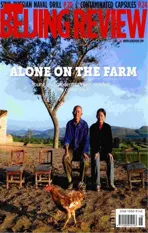Cultivating Modern Farmers
2012-12-23
Cultivating Modern Farmers
Despite industrializing at an unprecedented rate over the past three decades, China remains basically an agrarian country in terms of the huge size of its farming population and the country’s vast rural areas.
China relies on agriculture to feed its 1.3 billion citizens, and over the years steady efforts have been made by the Chinese Government to promote agricultural development and raise the living standards of farmers.
An acute problem, however, has emerged for the agricultural sector in recent years.
As the income gap between the country’s urbanites and their rural counterparts grows ever wider, more and more young farmers have chosen to flow into cities to find better lives and employment, leaving behind in their hometowns the elderly, the physically weak and women to take care of the farmland. With urban wages generally becoming the main source of revenue for many rural households, farm work has become an increasingly low priority for rural residents.
Continuing migration has led to a drastic reduction of farm hands willing to work in the fields. This “hollowing-out” of farm laborers is said to be one of the biggest obstacles the country must overcome if it aims to build a modern agricultural sector and drive up rural development.
To address the shortage of qualified farm labor, concrete measures must now be taken by the authorities concerned. These include stepping up social security and healthcare networks in rural areas, providing preferential policies to farmers such as giving out more farm subsidies, bank loans and offering further tax cuts. Ultimately, the government must work to reduce the income disparity between urban and rural areas.
Only when the living and working conditions in the countryside improve will farming become an attractive profession in the eyes of the younger generation.
China, however, not only needs more young farmers to remain on the land, but also needs to train its farmers in modern agricultural techniques and give them access to the best technology and science available in the industry.
For thousands of years, agriculture in the country depended almost entirely on the natural climate and individual practical experience, with the vast majority of the rural populace being traditionally illiterate. But in today’s world, farming is more and more hi-tech and knowledge-based. Knowledge and technologies remain the key to building a vibrant agricultural economy, and only education and training will allow China to cultivate a crop of farmers who will spur a much-needed agricultural revival.
